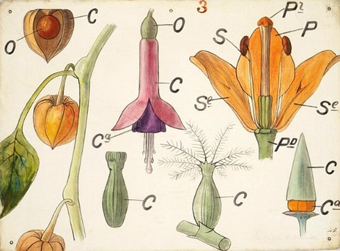Product Description
Christopher Dresser / Linthorpe Art Pottery Rare Aesthetic Movement “Gourd” Vase 1879-1882



CHRISTOPHER DRESSER (1834-1904) UK
LINTHORPE ART POTTERY, Middlesbrough
HENRY TOOTH Artistic Manager Linthorpe (1842-1918) UK
“Gourd Vase” 1879-1882
Glazed Earthenware
***Extremely rare Dresser / Linthorpe model.
Marked: LINTHORPE, Chr. Dresser (facsimile signature) HT, no. 326
Illustrated: Christopher Dresser: Truth, Beauty, Power exh. cat. (New York: Historical Design, 1998) p.75; illustrated in two drawings for gourd vases in Dresser’s 1881 design and account book under heading “Aug. 29, 1881. Sent to J. Harrison Esq. 41 Designs for Linthorpe.”
H: 7 3/4″
The contrasts in Dresser’s designs for different materials showed how his approach to design was also shaped by the properties and nature of a material. In 1879 Dresser was appointed art director at the newly established Linthorpe pottery, near Middlesbrough. Founded by John Harrison, a local businessman, the pottery’s aim was to use local clay to provide jobs for local men. Dresser’s design for the moulds for the pottery were inspired by a wide range of cultures from Japan, Peru, Mexico, Morocco and Ancient British forms. These very striking pieces, with the metal oxides in the complex and innovative glazes providing the only decoration. All of his designs were impressed with a facsimile signature. When Linthorpe closed in 1889, its moulds were acquired by a rival, Ault Pottery in Derbyshire. In 1893, Dresser signed a contract with Ault for new designs specifying that each pot should be marked with his facsimile signature.
Christopher Dresser / Linthorpe Art Pottery Rare Aesthetic Movement “Gourd” Vase 1879-1882
CHRISTIAN THOMSEN (1860-1921) Denmark
ROYAL COPENHAGEN
“Frog and Dragonfly” vase 1901
Glazed porcelain with a frog in 3-D sculptural relief looking at a dragonfly seated on a calla lily leaf looking up at the blossom.
Form number 280
Marks: ROYAL COPENHAGEN, CROWN, 465/250, 3 wavy lines (Royal Copenhagen) insignia, inscribed A. 250
For more information see: Musterbuch KPF, um 1930, Illustration number 204; Porzellan, Kunst und Design 1889 bis 1939, vom Jugendstil zum Funktionalismus (Berlin: Bröhan-Museum, 1993) p. 467, ill. 435; Sammlung Bröhan: Kunsthandwerk 2, Metall, Porzellan (Berlin: Bröhan Museum, 1977), pp. 222-285.
H: 9″ x Dia: 3 1/2″
Christian Thomsen was employed at the Royal Porcelain Manufactory (Royal Copenhagen) in 1898, and was employed there until his death in 1921. Thomsen is said to have had a huge impact on Royal Copenhagen’s success throughout the 20th century. A large part of the recognition by the Royal Porcelain Factory has enjoyed over the years, they can thank Christian Thomsen for. He produced more than 100 different figurines, especially he had a fondness for agricultural characters, children figurines, figurines inspired by Hans Christian Andersen’s fairy tales, fauns and trolls, and not least charming animals and bird figures.
CHRISTOPHER DRESSER (1834-1904) UK
HUKIN & HEATH Birmingham, England
“Crow’s foot” spoon warmer 1878
Silver-plate
Marks: H&H, 2362
Two other examples are recorded but with complex Victorican engraving.
Illustrated: Christopher Dresser and Japan, exh. cat. ed. by Koriyami City Museum of Art, Brain Trust Inc. (Koriyami 2002), cat. no. 114, p. 138; Christopher Dresser, ein Viktorianischer Designer, 1834-1904, (Cologne: Kunstgewerbemuseum der Stadt Köln, 1981) cat. no. 15; Truth, Beauty, Power: Dr. Christopher Dresser 1834-1904, exhib. cat. Historical Design, Inc. (New York, 1998) p. 33.
H: 4 3/4” x W: 7”
